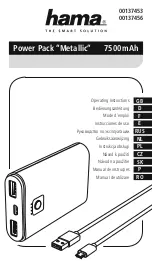
M520086-01
3-8
programming, the programming coefficient is 0.1 volt per percent of rated
output or 10 volts = 100%. See Figure 3-6 for connection requirements.
3.1.4 Remote
Sensing
In applications where the load is located some distance from the power supply, or the
voltage drop of the power output leads significantly interferes with load regulation, remote
voltage sensing may be used. When remote sensing is used, voltage is regulated at the
load versus the power supply output terminals. To connect the power supply for remote
voltage sensing (see Figure 3-7 for connection requirements), perform the following
procedure.
CAUTION
If the power supply is operated with load power
lines disconnected and sensing line connected,
internal power supply damage may occur. (Output
current then flows through sensing terminals.)
a.
Remove jumper between the positive sense terminal (TB1-2) and the positive
output monitor terminal (TB1-1).
b.
Remove jumper between the negative sense terminal (TB1-6) and the negative
output monitor terminal (TB1-7).
c.
Connect sensing leads from the load positive to TB1-2 and the load negative to
TB1-6. A shielded, twisted pair is recommended to avoid potential noise
interference.
3.1.5
Remote Output On/Off Control
Remote on/off control may be accomplished by contact closure or by an isolated external
AC/DC voltage source.
a.
Remote on/off by contact closure. Output is on when contacts are closed.
See Figure 3-8 for connection requirements.
b.
Remote on/off control may be accomplished by an external 12 to 240 VAC or 6
to 120 VDC source. Application of AC/DC voltage will turn on the power
supply. See Figure 3-9 for connection requirements.
















































